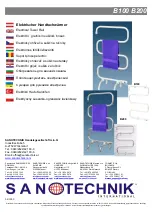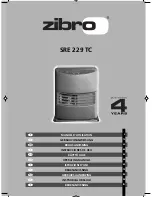
of malfunctions, compliance with warranty obliga-
tions and quality improvement. To that end, these
data, in particular information about component
loads, technical events, malfunctions and other
faults may be transmitted along with the vehicle
identification number to the manufacturer. Fur-
thermore, the manufacturer is subject to product
liability. For this reason the manufacturer also
uses operational data from the vehicle, for exam-
ple, for recalls. These data can also be used to
examine the customer's warranty and guarantee
claims.
Malfunction memories in the vehicle can be reset
by a service outlet or at your request as part of
repair or maintenance work.
Convenience and infotainment functions
You can store convenience settings and individual
settings in the vehicle and change or reset them
at any time.
Depending on the vehicle equipment, this
includes the following settings, for example:
R
seat and steering wheel positions
R
suspension and climate control settings
R
individual settings, such as interior lighting
Depending on the selected equipment, you can
import data into vehicle infotainment functions
yourself.
Depending on the vehicle equipment, this
includes the following data, for example:
R
multimedia data, such as music, films or pho-
tos for playback in an integrated multimedia
system
R
address book data for use in connection with
an integrated hands-free system or an integra-
ted navigation system
R
entered navigation destinations
R
data about the use of Internet services
These data for convenience and infotainment
functions may be saved locally in the vehicle or
they may be located on a device which you have
connected to the vehicle, such as a smartphone,
USB flash drive or MP3 player. If you have entered
these data yourself, you can delete them at any
time.
This data is transmitted from the vehicle to third
parties only at your request. This applies, in par-
ticular, when you use online services in accord-
ance with the settings that you have selected.
Smartphone integration (e.g. Android Auto or
Apple CarPlay
®
)
If your vehicle is accordingly equipped, you can
connect your smartphone or another mobile end
device to the vehicle. You can then control them
by means of the control elements integrated in
the vehicle. Images and audio from the smart-
phone can be output via the multimedia system.
Certain information is simultaneously transferred
to your smartphone. Depending on the type and
integration, this includes position data, day/night
mode and other general vehicle statuses. For
more information please consult the Operator's
Manual of the vehicle/infotainment system.
This integration allows the use of selected smart-
phone apps, such as navigation or music player
apps. There is no further interaction between the
smartphone and the vehicle; in particular, vehicle
data is not directly accessible. The type of addi-
tional data processing is determined by the pro-
vider of the app being used. Which settings you
can make, if any, depends on the specific app and
the operating system of your smartphone.
40
General notes
Summary of Contents for EQS 2023
Page 8: ...Left hand drive vehicles with central display 6 At a glance Cockpit central display...
Page 10: ...Left hand drive vehicles with MBUX Hyperscreen 8 At a glance Cockpit MBUX Hyperscreen...
Page 12: ...Standard driver s display 10 At a glance Indicator and warning lamps standard...
Page 15: ......
Page 19: ......
Page 20: ...18 At a glance Overhead control panel...
Page 22: ...20 At a glance Door operating unit and seat adjustment...
Page 24: ...22 At a glance Control settings in the rear passenger compartment...
















































